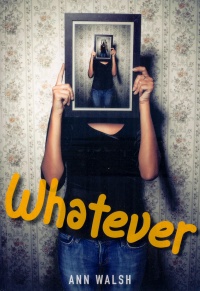| ________________
CM . . . . Volume XX Number 8 . . . . October 25, 2013
excerpt:
Darrah Patrick is fed up with her parents focussing all of their attention on her younger brother, Andrew, who was recently diagnosed with epilepsy. When Andrew has a seizure and her mother insists she accompany them to the hospital, Darrah misses final auditions for a lead role at the community theatre. Angry that her plans have been thwarted, she impulsively sets off a fire alarm and leaves the hospital in chaos. As an alternative to appearing in court for the offence, 16-year-old Darrah is given the option of participating in the Restorative Justice program. She and her parents meet with a program facilitator, the constable in charge of the case, and Mrs. Johnson, the elderly woman injured as a result of Darrah's actions. Mrs. Johnson claims that she was startled by the alarm, causing her to slip on the stairs and break her leg. Taking into account Mrs. Johnson's limited mobility, it is decided that Darrah will help Mrs. Johnson with housework after school as reparations. As the weeks pass, Darrah finds that she no longer thinks of Mrs. Johnson as the "cranky, crazy old lady" she's obligated to help. They bond over tea and conversation, and with the older woman's guidance, Darrah discovers a knack for cooking. She even befriends Mrs. Johnson's 17-year-old grandson, Robin, who is often on hand to help out. So when Darrah learns that Mrs. Johnson's vision is failing, she is genuinely concerned. She knows that the last thing Mrs. Johnson wants is to be forced to leave her house for a nursing home. This never comes to pass since Mrs. Johnson dies shortly before she is due to move. Darrah is much changed by her friendship with Mrs. Johnson, though her transformation seems too pat. Her flippant behaviour is replaced by thoughtfulness, and she shows a surprising amount of maturity by the novel's conclusion. It should be noted that what Darrah uncovers about the true nature of Mrs. Johnson's death touches on the issue of suicide. Whatever is simply written and rather conservative in tone. Family relationships and friendships are portrayed in a sentimental manner, making this novel better suited to readers at the younger end of the teen spectrum. Recommended. Sylvia Santiago works in Libraries & Cultural Resources with the University of Calgary.
To comment
on this title or this review, send mail to cm@umanitoba.ca.
Copyright © the Manitoba Library Association. Reproduction for personal
use is permitted only if this copyright notice is maintained. Any
other reproduction is prohibited without permission.
NEXT REVIEW |
TABLE OF CONTENTS FOR THIS ISSUE
- October 25, 2013.
AUTHORS |
TITLES |
MEDIA REVIEWS |
PROFILES |
BACK ISSUES |
SEARCH |
CMARCHIVE |
HOME |
